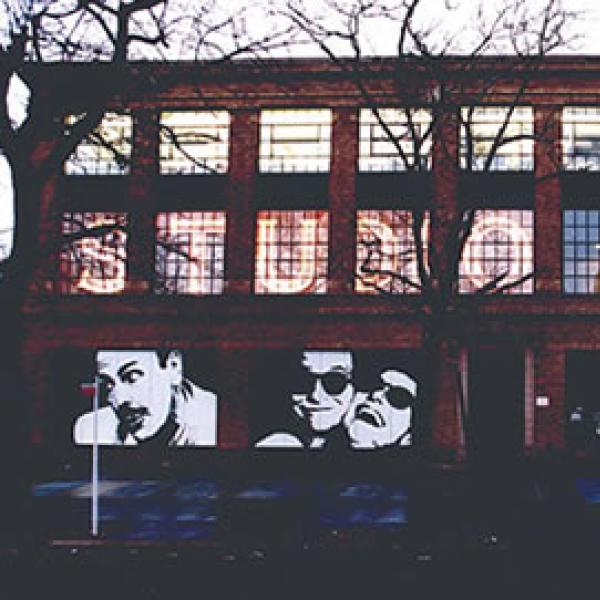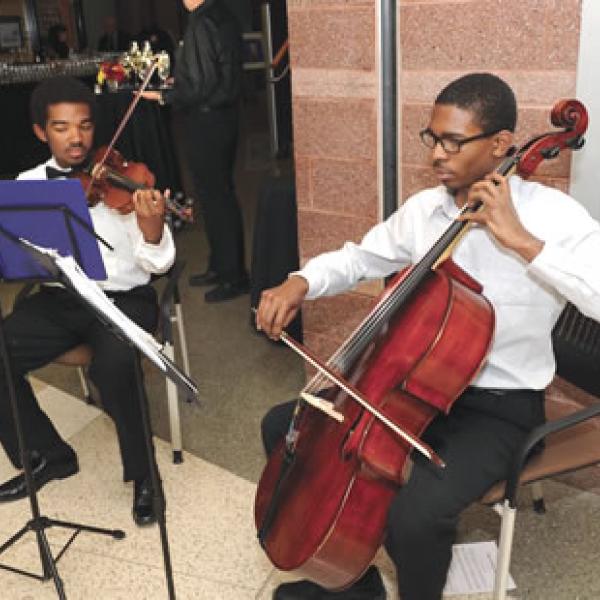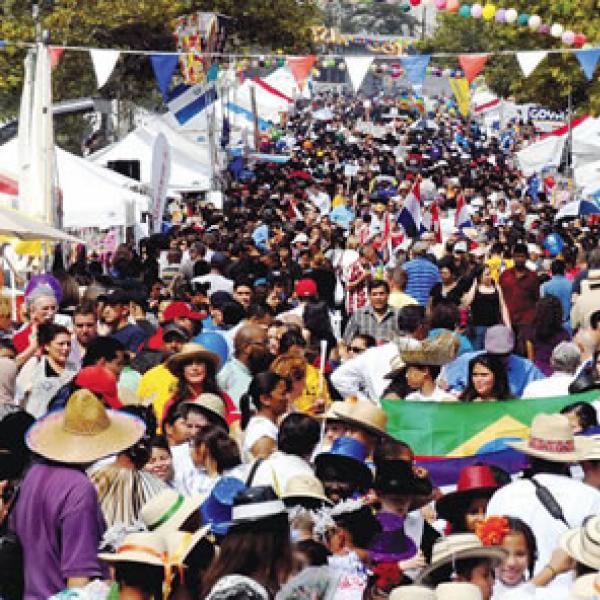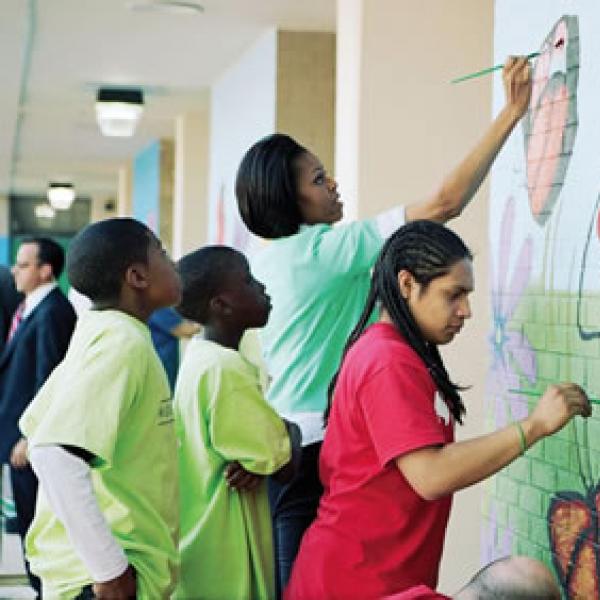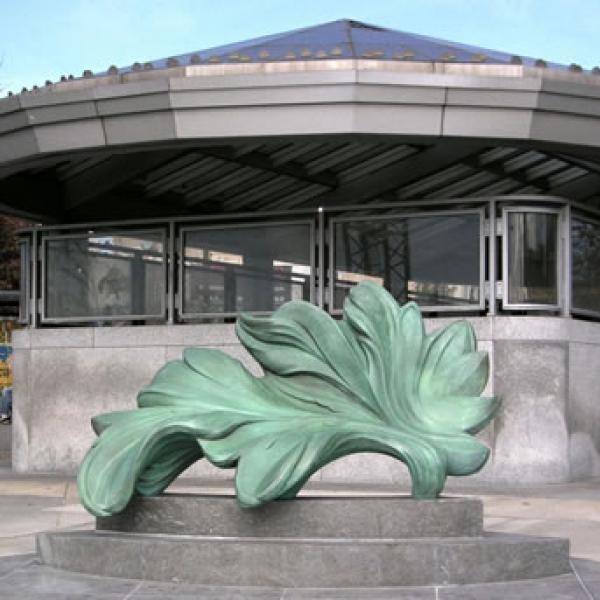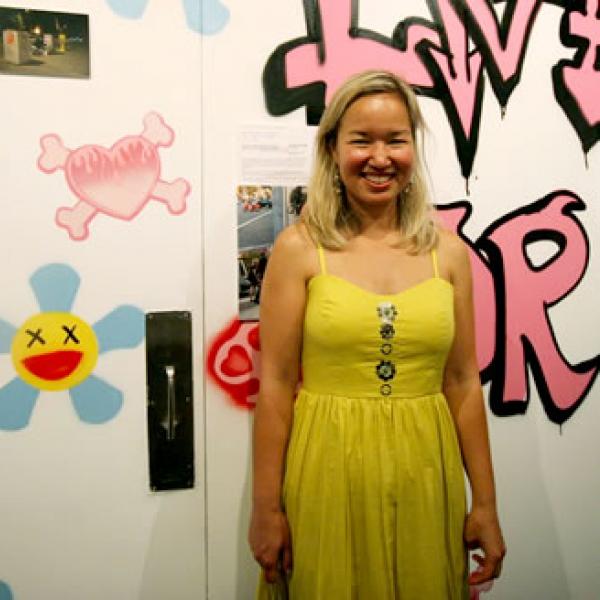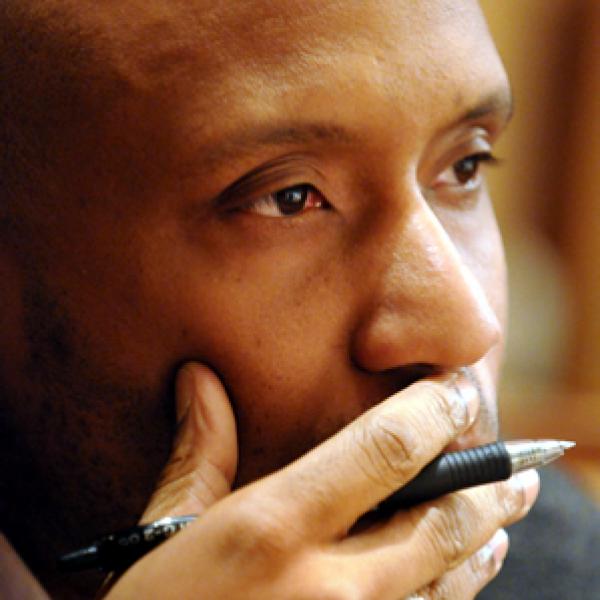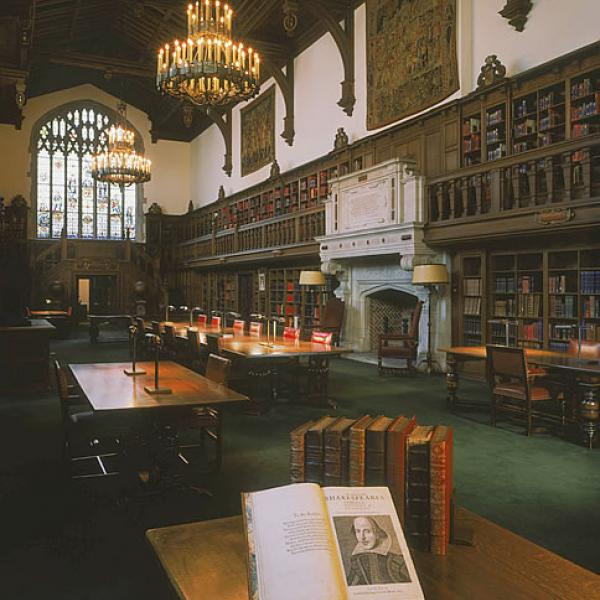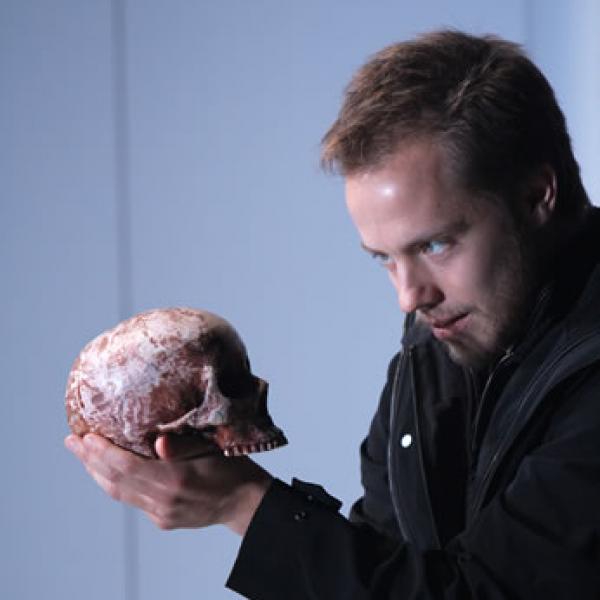Connecting Between Cultures
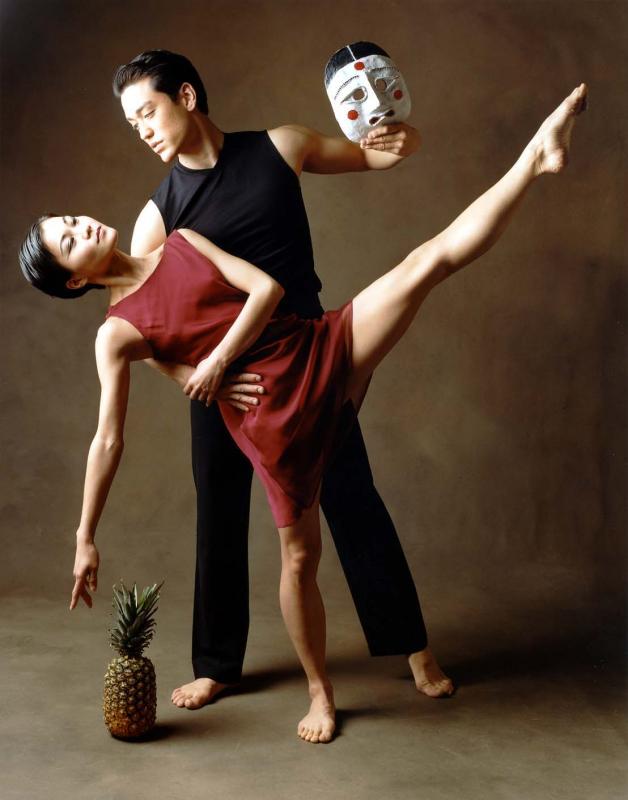
Connie Fink and Dana Tai Soon Burgess strike a pose. Photo by Mary Noble Ours
The nation's capital is one of the most culturally diverse cities in the country, boasting more than 175 foreign embassies, residences, chanceries, and diplomatic missions. This diversity extends further into the city via neighborhoods, restaurants, shops, and festivals -- and through the arts.
According to Peter DiMuro, director of Dance/MetroDC, approximately 70 percent of the dance companies and independent choreographers listed in his organization's directory are grounded in another country's dance culture. DiMuro noted, "People come from overseas to work in DC and their culture pushes to be expressed and that expression is often through dance."
One dance artist who creatively and quite literally embodies the District's cultural diversity is contemporary dance artist Dana Tai Soon Burgess. Dana Tai Soon Burgess and Company (DTSB) debuted in Washington, DC in 1992, and since then has performed frequently in the city as well as across the country and around the world, presenting work that the New York Times has called "attractively sinuous."
Born to a Hawaiian and Korean mother and a father of Irish, English, and Scotch descent, Burgess was raised in Santa Fe, New Mexico, and attended a bilingual school. At a martial arts dojo, he found a place that both grounded and inspired him, providing him with a sense of home. His father, seeing his son's physical talents, suggested he try a dance class.
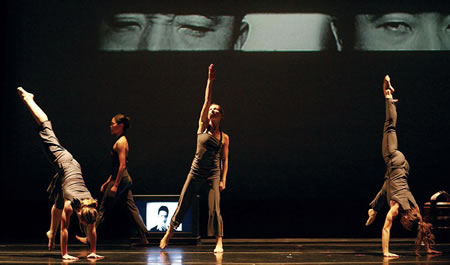
Dana Tai Soon Burgess and Company performing the world premiere of Hyphen at Lisner Auditorium in Washington, DC, in 2008. Photo by Mary Noble Ours |
Burgess's dance studies included the work of Michio Ito, a modern dance pioneer who fused Eastern and Western movement styles in his choreography. East and West also meld in Burgess's choreography, which often focuses on what it means to be "The Other" in society. A review in KOREA Update described his work as building "bridges between cultures of rice bowls and Coke cans."
"What I'm very interested in, in building dances, is this idea of the archetypal situation, with concepts that are universal and that find connectivity between cultures," explained Burgess. "Those issues can be about love, they can be about family, they can be about death, they can be about an historic event…. There's some shared story or series of stories that all of humanity has. And when you get to the essence of the story and show that through dance, then you take away the language barrier and you start to get to the symbolic."
To illustrate that idea of the shared story, Burgess described an experience in Lima, Peru, performing one of his dances that centered on his family's migration in 1903 from Korea to Hawaii to work in the pineapple plantations. He and the dancers were surprised by the energetic audience response. Later, the company learned that Peru had also experienced a wave of Asian immigration at about the same time and that those immigrants, like those in Hawaii, were agricultural workers. So the Peruvian audience found great resonance in the theme and images that unfolded on stage.
DTSB spends much of its year outside the United States, not only performing but working deeply in communities. The company offers multi-tiered programming, including master classes and setting choreography, tailored for each community. In preparation for these engagements, Burgess conducts extensive research and talks with other artists, cultural officers, and his international network of collaborators.
"When I approach a project, I really assess where the community is in development, what it needs, and then interact with the community and collaborators to try and create a project that will have very positive outcomes for them," explained Burgess. But he emphasized that this process is a two-way street; he in turn gains a great deal from working with other artists, including "how they inform their bodies, what techniques they use, the different sights, sounds, and stories. All expand my ability to create. The larger your world is or your borders as they expand, the more your capacity for creativity or capacity for engagement through creativity."
In the U.S., Burgess's choreography has been presented and commissioned by the Kennedy Center for the Performing Arts, the Smithsonian Institution, and the United Nations, among many other venues. Internationally, he and the company have toured to a number of countries, including Bulgaria, Colombia, and Israel.
In addition, Burgess has been an American cultural specialist for the United States Department of State six times. He believes his State Department partnerships have been successful because he is able to look at cultural diplomacy as "friendship-building" that is forged on many different levels.
Columbia Barrosse, chief of the Cultural Programs Division of the Bureau of Educational and Cultural Affairs at the State Department concurred. "Dana is interested in true international cultural exchanges, not just in touring performances but in collaborating with foreign artists and in reaching out to students and young audiences." She added, "The fact that his work also raises awareness of social issues demonstrates the important link that can exist between the arts and substantive policy."
According to Maura M. Pally, the Bureau's acting assistant secretary, "Dana is the ideal citizen diplomat -- he combines artistic integrity with generosity of spirit and a fundamental belief that the arts can bridge differences and have a positive influence in our relations with other countries."
When Dana Tai Soon Burgess comes home to DC after working intensely in another country, what does he looks forward to the most? Getting back into his own studio where he can sift through all that he has encountered and see what ideas coalesce. "It's only when you get back home that you realize how intense the experience was, when you step back and think, 'I'm different now, something has changed.'"


